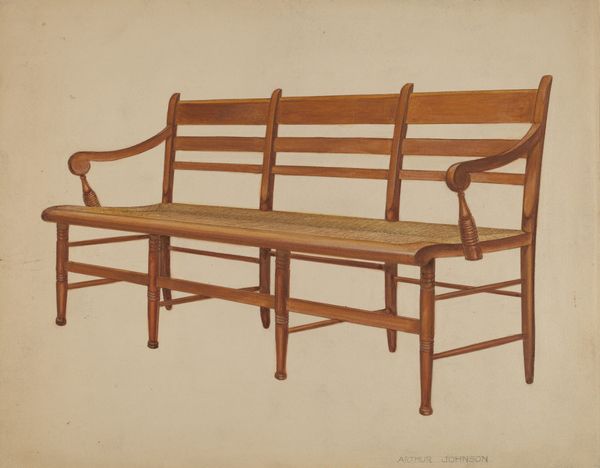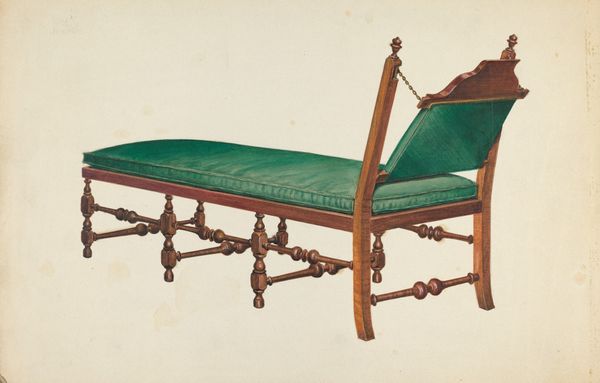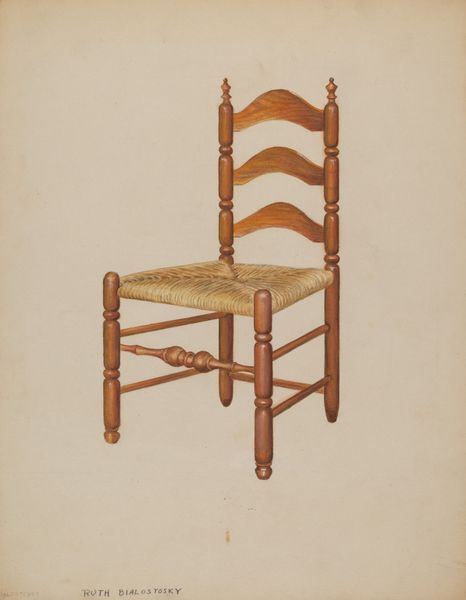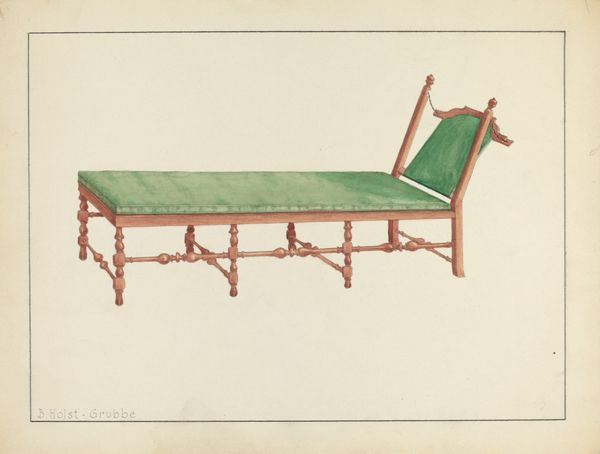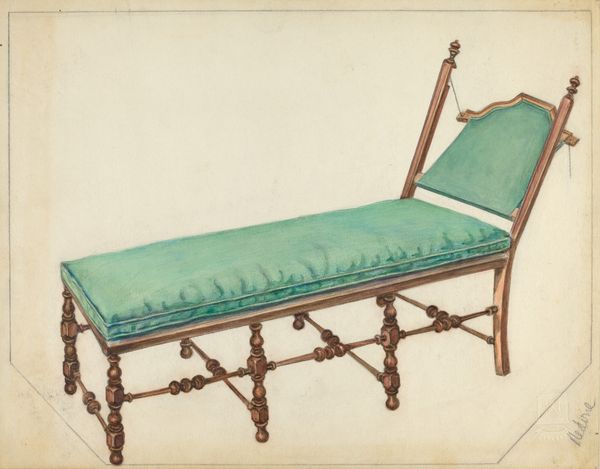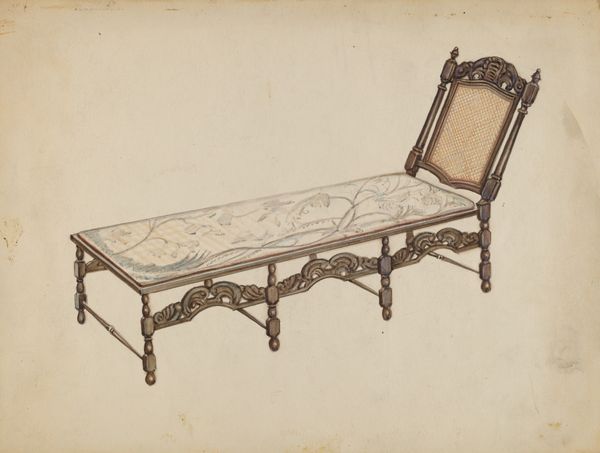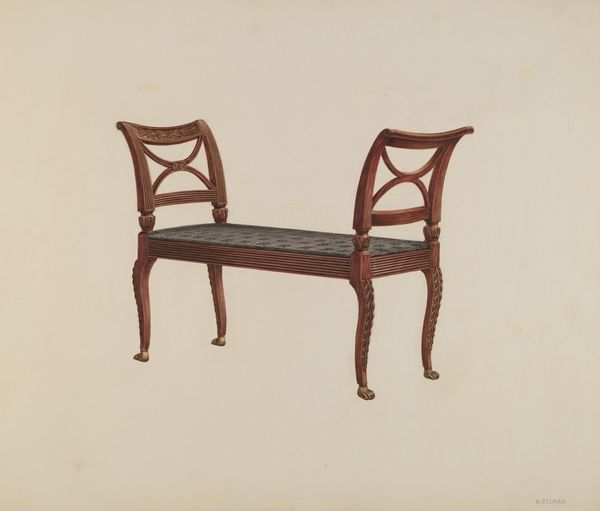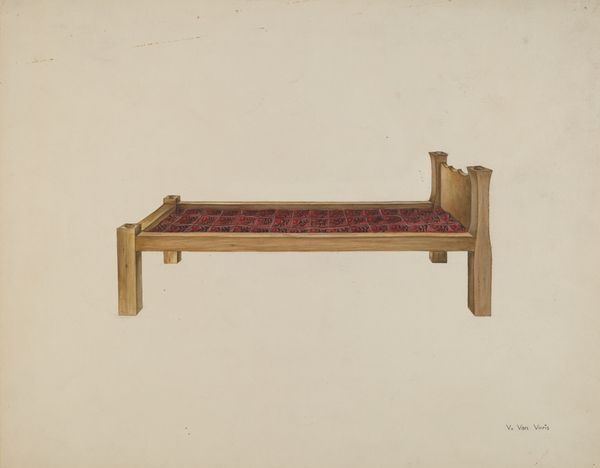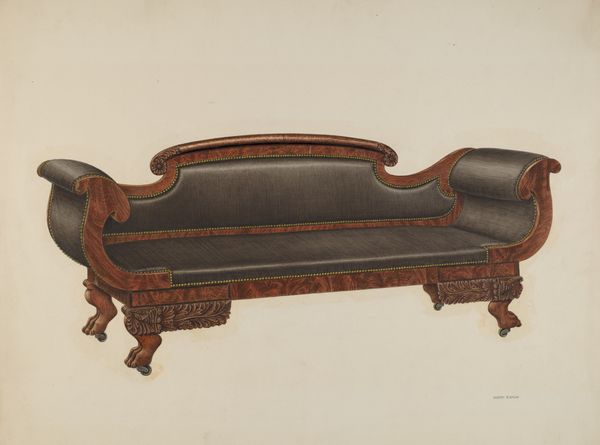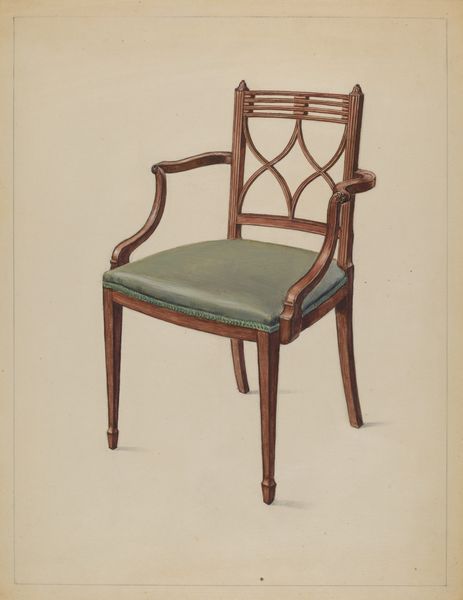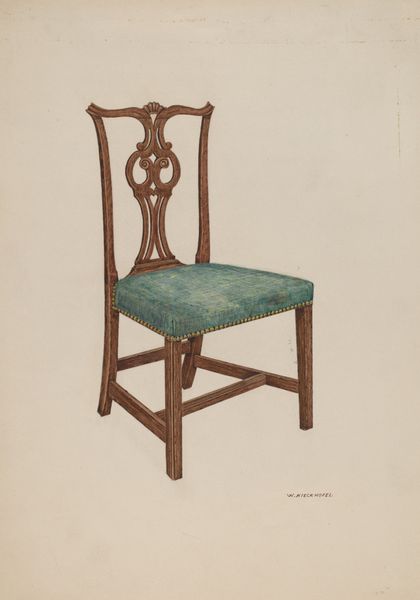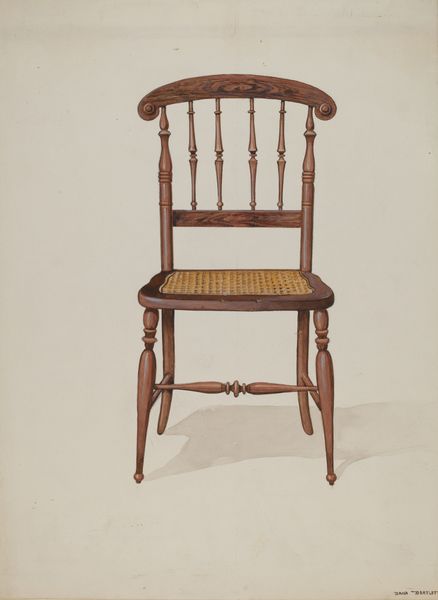
drawing, watercolor
#
drawing
#
water colours
#
watercolor
#
ceramic
#
academic-art
#
modernism
#
watercolor
Dimensions: overall: 44.4 x 55.9 cm (17 1/2 x 22 in.) Original IAD Object: 61"long; 21"wide; back posts 38"high; bed 16 1/2"high off of floor.
Copyright: National Gallery of Art: CC0 1.0
Curator: This watercolor drawing is Harry Eisman's "Day Bed," created in 1941. Eisman captured the detailed woodwork and upholstered surfaces with careful observation. What are your first thoughts on this piece? Editor: It's oddly compelling. The antique styling clashes intriguingly with the minimalist rendering. The materiality feels…almost too precise. Like a manufactured object, not an artwork, if that makes sense. Curator: Absolutely. I think that tension between handcrafted detail and modern presentation speaks to broader artistic debates of the time. Modernism was really grappling with tradition. You can see Eisman trying to reconcile those aesthetics within an object designed for leisure. Editor: Right. What's striking to me is how the watercolor itself becomes a material commentary. The flat, even washes negate the depth and texture we associate with traditional furniture making. Is this, then, about the status of art versus design? Or handmade versus mass-produced objects? Curator: Possibly both. Eisman came of age as an artist at a time when craft guilds were becoming part of art programs, as fine art adopted craft methodologies to make new styles of art. So how should the museum display that shift? In this instance, that makes it harder for art professionals, because we have inherited those old dichotomies and distinctions, and we reproduce them in shows. Editor: Good point. The drawing's existence challenges the perceived hierarchy. Plus, you can't ignore the social aspect. This "Day Bed" implies a life of ease. Watercolor painting isn’t exactly a labor-intensive pursuit, furthering that perception. Who are such luxuries "for?" And how does art display that reality to the masses? Curator: It's a valid point. Eisman isn’t critiquing the furniture. But displaying artwork like this alongside paintings from this period certainly does pose questions to a modern audience about class and social expectations. Editor: Exactly. A work of art that allows us to unpack both aesthetic value, material practice, and social meaning, really delivers the complete story, and isn't that really our role? Curator: I couldn't agree more. Seeing how an everyday object like a day bed becomes a stage for considering those tensions... it really opens a window onto an important moment in American design.
Comments
No comments
Be the first to comment and join the conversation on the ultimate creative platform.
